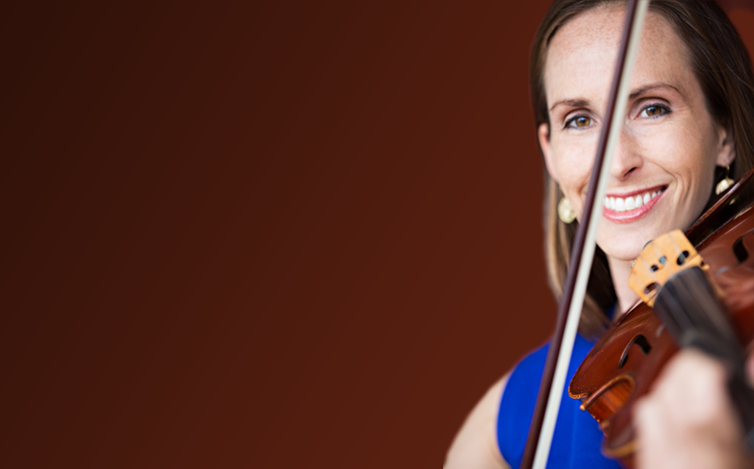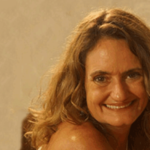Kristina is a virtuoso violist and violinist. She has toured in Europe and China, and has performed in orchestras and festivals throughout the U.S. She teaches private violin and piano students in New York City, leads a Youth Ensemble at The Riverside Church, and home schools her two young daughters. You can learn more about her and her music at www.kristinagiles.com and by subscribing to her YouTube channel.
1. Tell us a little bit about the kind of music you play and how you first discovered your love of music.
I have always loved music. I begged my mom to start piano when I was five years old, and at nine I took up the viola in public school. I am classically trained: anything from Monteverdi, to Mozart, to contemporary classical is my specialty. I also play period Baroque instruments, which have special bows and gut strings. But I also have special place in my heart for the music of my youth: 90’s alternative rock.
I knew I wanted to pursue music as a profession when I attended Credo, my first chamber music camp, in high school. Even though I loved playing the viola, I was repelled by the hyper-competitiveness and narcissism I found in the world of classical music. But at this camp, I experienced how musicians could work together in a supportive atmosphere, to play the most amazing pieces together. Chamber music is my nirvana. If I could play Brahms piano quartets all day with my friends, I would.
2. Since 2015, you have been working on “The Campagnoli Project,” a long-term project dedicated to recording Campagnoli’s 41 caprices for viola. What can you tell us about this project and your inspiration to take on a project of this magnitude? How do you approach mastering the beautifully complex caprices?
The Campagnoli Project was inspired by my viola student, who came to a lesson frustrated that she couldn’t find a single recording of the Campagnoli caprice I had assigned to her. Bartolomeo Campagnoli’s Caprices for Viola were the first virtuosic solo pieces ever written for the instrument. They are an important part of any violist’s repertoire, even though they are not usually performed. However, I found it surprising that no one had recorded these pieces. So rather than wait for a famous person, I decided to do it myself. I wanted the recordings to be a resource for students and teachers: so I set up a blog to accompany each recording, where I could discuss my artistic decisions and also my own struggles in learning the pieces. I have found that by exposing my own weaknesses, I can better connect with and encourage others. That is also the joy of music: no one is perfect. There is always a new challenge or a different way to play something.
It usually takes me about 3 months to prepare about three caprices for a recording session. During the first two weeks, I play through the caprices to understand them. Then I dive into the detail work of spot practicing (working on small sections), artistic shaping, and memorizing. I don’t memorize all of the caprices, but I feel that I play them better when I do. The most challenging component for me is the technique – making sure every note is perfectly in tune with a beautiful sound. During the final month I record and listen to myself regularly. Since the videos are one live shot, I have to be prepared to play through each caprice almost flawlessly. I started this project shortly after the birth of my first daughter, and now I have two. So all of this has happened after the time crunch of new parenthood. Suffice to say, I have become extremely efficient in my practice sessions. You can track the progress of the Campagnoli Project here.
3. How do you think music can be used to challenge the status quo?
We live in an overstimulating digital age. I can’t think of a better way to challenge the status quo than to play music. To sit down and practice an instrument – at any level – demands singular focus. You have to be aware, listen to yourself, and be a critic, but you also must be a self-encourager. At another level, think of a group of musicians doing all of these things, together. Add an audience. Now you have people engrossed in the music, watching the silent communication between the musicians, and wondering how it happens. It’s pretty magical. The most thrilling feeling is playing for people and sharing that joy: you can almost feel the electricity in the air. In a time when what we most need is community and connection, music gives that to us.
Bold



